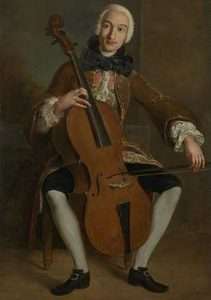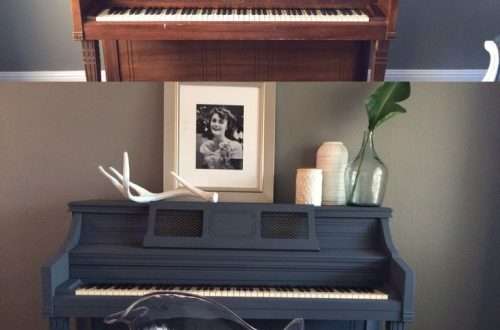
Cello History

Cello is a musical instrument, a group of stringed, i.e. to play it, a special object conducting along the strings is required – a bow. Usually this wand is crafted from wood and horsehair. There is also a way of playing with fingers, in which the strings are “plucked”. It’s called pizzicato. The cello is an instrument with four strings of various thicknesses. Each string has its own note. At first, the strings were made from sheep offal, and then, of course, they became metal.

The first reference to the cello can be seen in a fresco by Gaudenzio Ferrari from 1535-1536. The very name “cello” was mentioned in the collection of sonnets by J.Ch. Arresti in 1665.
If we turn to English, then the name of the instrument sounds like this – cello or violoncello. From this it is clear that cello is a derivative of the Italian word “violoncello”, which means a small double bass.
Step by step cello history
Tracing the history of the formation of this bowed string instrument, the following steps in its formation are distinguished:
1) The first cellos are mentioned around 1560, in Italy. Their creator was Andrea Mati. Then the instrument was used as a bass instrument, songs were performed under it or another instrument sounded.
2) Further, Paolo Magini and Gasparo da Salo (XVI-XVII centuries) played an important role. The second of them managed to bring the instrument closer to the one that exists in our time.
3) But all the shortcomings were eliminated by the great master of stringed instruments, Antonio Stradivari. In 1711, he created the Duport cello, which is currently considered the most expensive musical instrument in the world.
4) Giovanni Gabrieli (late 17th century) first created solo sonatas and ricercars for cello. In the Baroque era, Antonio Vivaldi and Luigi Boccherini wrote suites for this musical instrument.
5) The middle of the 18th century became the peak of popularity for the bowed string instrument, appearing as a concert instrument. The cello joins symphonic and chamber ensembles. Separate concertos were written for her by the magicians of their craft – Jonas Brahms and Antonin Dvorak.
6) It is impossible not to mention Beethoven, who also created works for the cello. During his tour in 1796, the great composer played before Friedrich Wilhelm II, King of Prussia and cellist. Ludwig van Beethoven composed two sonatas for cello and piano, Op. 5, in honor of this monarch. Beethoven’s cello solo suites, which have withstood the test of time, were distinguished by their novelty. For the first time, the great musician puts the cello and piano on an equal footing.
7) The final touch in the popularization of the cello was made by Pablo Casals in the 20th century, who created a specialized school. This cellist adored his instruments. So, according to one story, he inserted a sapphire into one of the bows, a gift from the Queen of Spain. Sergei Prokofiev and Dmitri Shostakovich preferred the cello in their work.
We can safely say that the popularity of the cello has won because of the breadth of the range. It is worth mentioning that male voices from bass to tenor coincide in range with a musical instrument. It is the sound of this string-bow magnificence that is similar to a “low” human voice, and the sound captures from the very first notes with its juiciness and expressiveness.
Cello today
It is quite fair to note that at present all composers deeply appreciate the cello – its warmth, sincerity and depth of sound, and its performance qualities have long won the hearts of both the musicians themselves and their enthusiastic listeners. After the violin and piano, the cello is the most favorite instrument to which composers turned their eyes, dedicating their works to it, intended for performance in concerts with orchestra or piano accompaniment. Tchaikovsky especially richly used the cello in his works, Variations on a Rococo Theme, where he presented the cello with such rights that he made this small work of his worthy adornment of all concert programs, demanding genuine perfection in the ability to master one’s instrument from the performance.
The Saint-Saëns concerto, and, unfortunately, Beethoven’s rarely performed triple concerto for piano, violin and cello, enjoys the greatest success with the listeners. Among the favorites, but also quite rarely performed, are the Cello Concertos of Schumann and Dvořák. Now to completely. To exhaust the entire composition of the bowed instruments now accepted in the symphony orchestra, it remains to “say” only a few words about the double bass.
The original “bass” or “contrabass viola” had six strings and, according to Michel Corratt, the author of the well-known “School for Double Bass”, published by him in the second half of the 18th century, was called “violone” by the Italians. Then the double bass was still such a rarity that even in 1750 the Paris Opera had only one instrument. What is the modern orchestral double bass capable of? In technical terms, it is time to recognize the double bass as a completely perfect instrument. Double basses are entrusted with completely virtuoso parts, performed by them with genuine artistry and skill.
Beethoven in his pastoral symphony, with the bubbling sounds of the double bass, very successfully imitates the howling of the wind, the roll of thunder, and generally creates a complete feeling of the raging elements during a thunderstorm. In chamber music, the duties of the double bass are most often limited to supporting the bass line. These are, in general terms, the artistic and performing capabilities of the members of the “string group”. But in a modern symphony orchestra, the “bow quintet” is often used as “an orchestra in an orchestra.”





